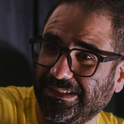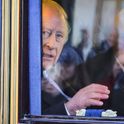In summer 2001, the northern towns of Oldham, Bradford and Burnley witnessed rioting by young Asians. To some observers, this brought back memories of the race riots which had flared up across Britain in the 1980s in places like Brixton and Toxteth. Ted Cantle’s report into the northern riots described a worsening relationship between white and Asian populations in these towns, who lived “parallel lives.” It seemed that nothing had changed; racism was a fact of British life.
In fact, between the 1980s and 2001 a great deal had changed. Twenty years before, racism and inequality were relatively low priorities for the main political parties. By contrast, the 2001 riots followed more than a decade of official anti-racism and diversity policies at local and national levels. Tagged by the media as the “race-hate capital” of Britain, Oldham had seen a raft of policies tackling racism. Rather than a repetition of history, the riots marked something new. Was Oldham so tense because of the way anti-racist policies had placed so much stress on ethnic difference?
I grew up in Oldham and have conducted research there in recent years. Today, despite the well-intentioned efforts of council officials, teachers, police and local charities, there is heightened tension and suspicion between communities. While there was racism and ignorance about Asians in the 1980s, there was also the opportunity to mix with white people at school. Now Pakistani and Bangladeshi pupils in Oldham account for around a third of the primary school population, but some eight out of ten of these children are in “mostly non-white” schools. My old school, Breeze Hill, which is more than 90 per cent Asian, will be merging this year with Counthill, which is more than 90 per cent white, to try to tackle the divide.
Both whites and Asians were angry that summer of 2001 following a series of media reports about alleged “no-go areas” in parts of the town and a sharp rise in racist incidents from previous years. The local police force had adopted the definition of a racist incident from the Macpherson report on the Stephen Lawrence murder (and endorsed by the Association of Chief Police Officers) as “any incident which is perceived to be racist by the victim or any other person.” They went into communities and sought to increase the reporting of such incidents. Thus, while reported racist crime in Oldham was fairly steady throughout the 1990s—with 246 racist incidents in 1994, 256 in 1996 and 290 in 1998—it jumped by 56 per cent in 2000, to 452—the highest rate of incidents in the Greater Manchester area. The majority of victims were reported to be whites (something the BNP drew attention to). All this provoked anger among Asians and whites, and a clash between football hooligans and local youths escalated into serious rioting.
Despite years of official exhortations to “celebrate diversity” many people retreated into their ethnic camps. If white people are constantly told how culturally different their Asian neighbours are, and if Asians are told to be vigilant against white racism, both groups might conclude that they have little in common and much to fear from their neighbours. Grievances over issues like unemployment and housing exacerbate these tensions.
Part of the problem in Oldham was that “promoting good relations” led to a clampdown on anything which might be deemed offensive. This created resentment. Conducting interviews in the town in 2007, I kept hearing claims that the council had banned the St George’s flag. But council staff could not tell me whether it had happened or not. One of them suggested that it might have been for “health and safety reasons.” Everyone I asked—Asian or white—felt this sort of decision was “typical” of the council. Whether it was banned or not, the decision was seen as believable.
This same problem exists throughout Britain, as the media reports stories of over-zealous officials who have banned English cultural symbols or gone to other extreme lengths to accommodate the (often imaginary) sensitivities of ethnic or religious minorities. Minorities themselves often see such measures as over the top, and are irritated when they are blamed. Some stories of “political correctness gone mad” are exaggerated by the press. But many are not. The Cantle report cited complaints about the police restrictions on marches and cultural festivals. Returning to the town in 2006, Ted Cantle noted that despite all the diversity training and race equality guidelines, people in Oldham “wanted to ask questions around faith and culture, but were afraid to do so because it might be thought ‘politically incorrect.’”
The growth of race relations management, diversity training and “promoting good relations” has come at a cost. We are more sensitised to racism, yet far less confident in talking to each other as human beings with similar hopes, problems and aspirations. No doubt many people working in race relations sincerely want to make things better. But by constantly drawing attention to race and policing ordinary behaviour, they risk making things worse.
Other articles in Prospect's special feature on the failings of multiculturalism today:
Tony Sewell on education
Lindsay Johns on dead white men
Swaran Singh on psychiatry
Sonya Dyer on the arts

Deepening the divide
Despite a decade of official anti-racism in Oldham, racial tensions have worsened
September 22, 2010












